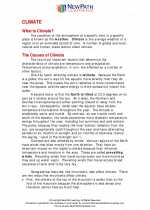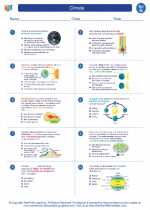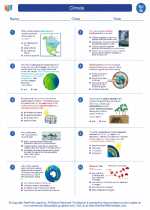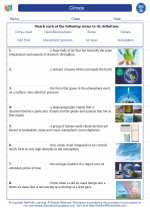Climate -> atmospheric pressure
Atmospheric Pressure
Atmospheric pressure is the force exerted by the weight of the air above an area on the Earth's surface. It is caused by the gravitational pull of the Earth and the motion of air molecules in the atmosphere. Atmospheric pressure decreases with increasing altitude because there is less air above to exert pressure.
Factors Affecting Atmospheric Pressure
Several factors can affect atmospheric pressure, including temperature, altitude, and weather conditions. As temperature increases, air molecules move faster and spread out, leading to lower pressure. At higher altitudes, there are fewer air molecules above, resulting in lower pressure. Weather conditions such as high or low pressure systems can also influence atmospheric pressure in specific regions.
Measuring Atmospheric Pressure
Atmospheric pressure is commonly measured using a barometer, which can be a mercury barometer or an aneroid barometer. The standard unit of measurement for atmospheric pressure is the pascal (Pa), but it is often expressed in millibars (mb) or inches of mercury (inHg) in weather reports.
Effects of Atmospheric Pressure
Changes in atmospheric pressure can affect weather patterns, air density, and human health. Low pressure systems are associated with cloudy and rainy weather, while high pressure systems are associated with clear skies. Changes in pressure can also affect the performance of aircraft and the behavior of gases in closed containers.
Study Guide
- Define atmospheric pressure and explain its causes.
- Describe the factors that can affect atmospheric pressure.
- Explain how atmospheric pressure is measured and discuss the units of measurement.
- Discuss the effects of atmospheric pressure on weather patterns, air density, and human health.
- Provide examples of how changes in atmospheric pressure can impact everyday activities and natural phenomena.










